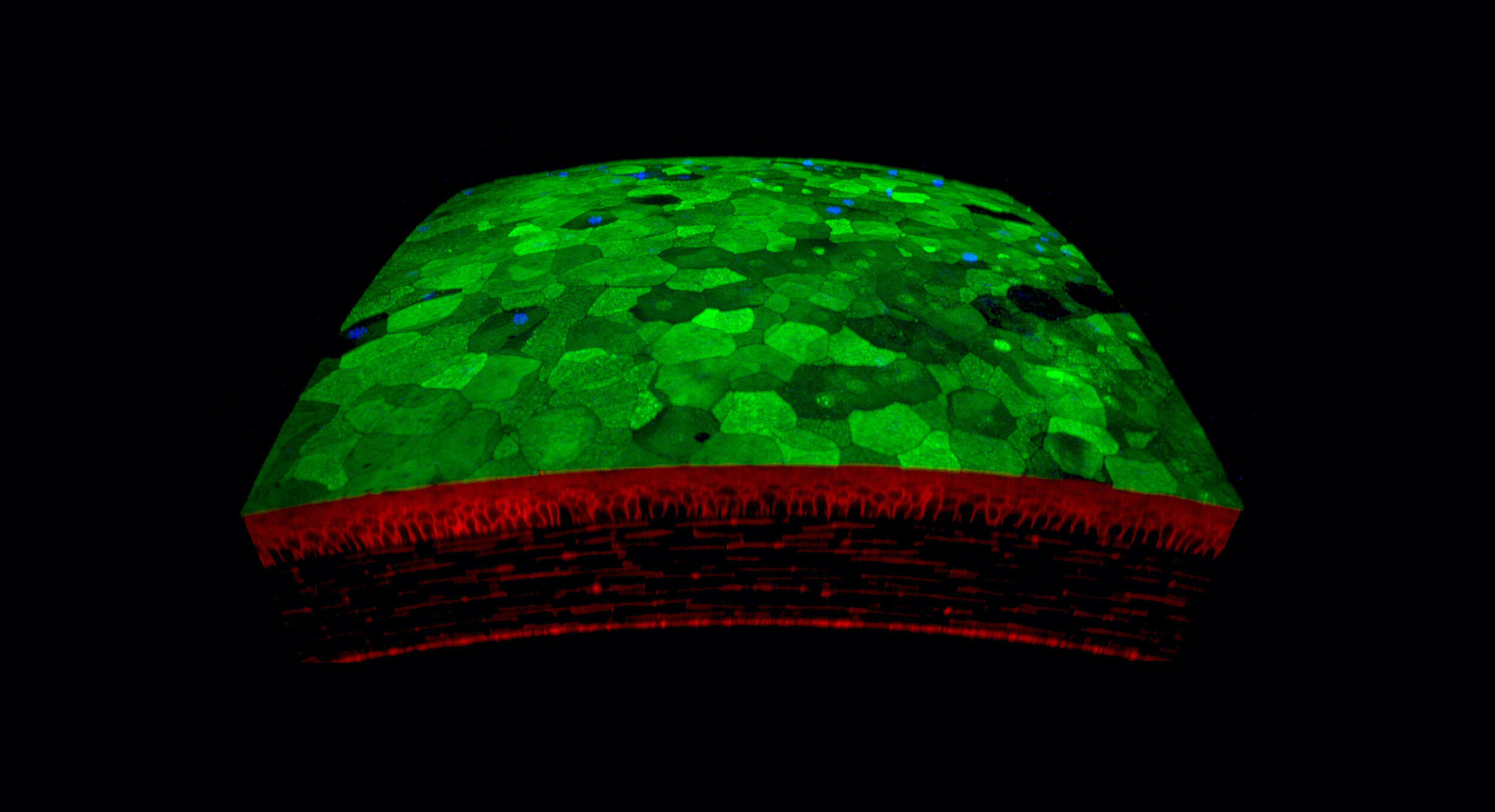
Host-Microbe Interaction at the Ocular Surface
Research at the UC Berkeley School of Optometry
Our epithelial surfaces are normally resistant to infection. Researchers who study infectious disease commonly use of models that deliberately compromise the target tissue (or otherwise bypass barriers) so that disease can be enabled and studied. These infection models have led to a plethora of important information about factors involved in pathology and/or its resolution when disease is initiated. However, other models are needed to study barriers to infection and early events that occur prior to disease initiation in the absence of overt injury.
In our laboratory, we have developed novel in vivo and in vitro methods for studying defenses during health using the eye and the opportunistic bacterium Pseudomonas aeruginosa as models. We have also advanced imaging technologies that enable us to see into the living epithelium to observe what bacteria do and how the tissue responds in either resistant or susceptible states. Using these methods, and employing novel technologies, we have identified specific factors that modulate the ability of bacteria to penetrate the ocular surface epithelium. The data show that pathogen recognition systems are involved in resistance, and suggest that bacterial adaptation in vivo contributes to pathogenesis. Studies aimed at understanding early interactions between microbes and the ocular surface prior to disease initiation have potential for development of novel methods to prevent (rather than simply treat) infection of the eye or other sites.
Professor Suzanne Fleiszig describes Molecular and Cell Biology as one of research fields within the Vision Science graduate program at UC Berkeley.
Why study the eye?
The eye is a gold mine of potential therapeutics. The cornea has unusual capabilities: it maintains transparency, rarely becomes inflamed, and is incredibly effective at resisting infection. One aim of our research is to discover unique antimicrobial factors in the eye that would be potential therapeutics.
Killer Eyes: Stopping Infections
Feature by Inside Science on the discovery of keratin-derived antimicrobial peptides killing bacteria.
Scientists use protein found in the eye to kill bacteria found in some infections.